Table of contents
The orange ( Citrus × sinensis L.), also known as the orange, is used in cooking both raw and cooked. In addition to the pulp, the peel is also used for flavoring and decoration in organic quality.
Use in the kitchen
The exotic fruits are a refreshing treat when peeled as a raw food snack, filleted in (fruit) salads or in muesli. Oranges in the form of fresh orange juice are a basic ingredient in the gluten-free and raw vegan Erb-Müesli . In addition to bananas and berries, which provide antioxidants, it also contains pseudocereals, seeds and golden millet . Try the Erb-Müesli plus oat flakes variant!
Oranges are well-known in jams and chutneys (with or without peel). They also add a touch of exotic flavor to vegan cakes, pies, ice cream and cream desserts and can even add a touch of exoticism to savory dishes. A vinaigrette, barbecue sauce or smoothie can be enhanced with the flavor of a finely pureed raw orange (e.g. in a mango-avocado-kale salad with ginger-orange dressing ).
You can enjoy chicory and fennel salad with oranges raw. It is also suitable as a raw vegetable in kale salad . A salad with beetroot or asparagus can be prepared steamed and combined with raw orange fillets, chopped walnuts, sunflower seeds or pistachios .
In alcoholic beverages, oranges not only decorate the glass, they are also an essential ingredient, e.g. in sangria or in Feuerzangenbowle (usually oranges with peel).
Do oranges have seeds? Oranges come with and without seeds. The popular "Navel" has none, is low in acid and is particularly easy to peel. However, it is not suitable for juicing, as the bitter substance limonin dissolves in the process. Use oranges suitable for juicing. If you have chosen a variety that is difficult to peel, leave the fruit at room temperature for a few days. This helps the fruit to loosen from the peel.
Vegan recipe for orange chutney
Ingredients: 3-4 oranges (raw, organic), 1 apple, a handful of cranberries, 100 g brown sugar, orange juice, white wine vinegar, possibly orange liqueur.
Preparation: Fillet the oranges, mix with a peeled, chopped apple, a handful of cranberries and the sugar. Add a little orange juice, white wine vinegar and optionally orange liqueur and simmer until the fruit has disintegrated. Season to taste with ginger, nutmeg, lemon juice or garlic and garnish with edible flowers (e.g. mallow, nasturtium, dandelion ) or a cinnamon stick .
You can also find vegan recipes with peeled oranges under the note: " Recipes that have the most of this ingredient ".
| Not only vegans or vegetarians should read this: Vegans often eat unhealthily. Avoidable nutritional errors . |
Purchasing - Storage
There are a variety of orange varieties and numerous countries where they are grown, so the fruit is always available to us. The most common varieties, such as the navel orange, can be found in the large supermarket chains such as Coop, Migros, Denner, Volg, Spar, Aldi, Lidl, Rewe, Edeka, Billa or Hofer, often in controlled organic quality (organic quality). Oranges can also be bought all year round in organic supermarkets such as Denn's Biomarkt or Alnatura .
Oranges without peel are rare. Even if you see peeled oranges and oranges packaged in plastic, you should prefer those with peel. You can occasionally find orange segments in a can, but these are usually sugared and far from being a natural product.
Since central and northern Europe imports fresh oranges mainly from southern Europe, the largest selection can be found in the season from December to April - the main harvest time for southern European orange fruits. Also note blood oranges or half-blood oranges, which have a much stronger taste than blond oranges, during this season. During this time, 75% of total imports to Germany come from Spain; but Greece, Italy, Morocco, Egypt and Turkey also supply the European market. In summer and autumn, the oranges mostly come from South Africa, Argentina, Uruguay and Brazil. 2
The peel can often give an indication of the quality: if it is very shiny, this indicates that it has been subjected to a lot of artificial treatment. If it is pale, the orange may not have ripened sufficiently (however, for fruits of tropical origin, the colour of the peel does not indicate the degree of ripeness, see below). If it smells musty, this may indicate mould.
The availability of oranges varies depending on the size of the store, catchment area, etc. If you are interested, click on our recorded food prices for the DA-CH countries (above under the ingredient image). There you will find current prices from various supermarkets and their price development.
Storage tips
Oranges should be kept in a cool, dry room at around 10-15 °C. There they will keep for more than a week. In the fridge the fruit will stay fresh for much longer, but it will lose its aroma. If the temperature is too high, oranges tend to rot and develop mold. Storage in a fruit basket, bruises and the ripening gas ethylene that other types of fruit emit promote spoilage in oranges. Therefore, it is important to spread them out next to each other if possible and regularly check for bruises and spoiled fruit.
In general, you should aim for ripe fruit when buying, as oranges, unlike other fruits, do not ripen through storage.
Ingredients - Nutritional values - Calories
Oranges without the peel contain around 47 kcal/100g. Of the 12% carbohydrates, around 9% is sugar, 3 which is made up of sucrose, fructose and glucose. Fat and protein are barely contained at < 1% and fibre accounts for around 2.4%. Oranges are known as a good source of vitamin C. However, with an average content of 53 mg of vitamin C per 100 g of pulp, they are far behind sweet peppers (183.5 mg), blackcurrants (181 mg), wild garlic (178.5 mg) or kiwi (93 mg). 3 The vitamin C content is highest in unripe oranges and in the peel it can even be up to seven times higher than in the pulp. 2
The dominant fruit acid is citric acid. Blood oranges also contain healthy anthocyanins as colorants. The peels contain plenty of pectin and essential oils. The mineral content is comparatively low. 2 Oranges can be stored for a long time, with the nutrients and flavor largely retained. This makes them a reliable source of vitamin C. Nevertheless, it would be an exaggeration to call oranges a superfood, as other types of fruit and vegetables contain significantly more vitamin C. Watch our video about vitamin C.
Folate, a folic acid-active substance group, is contained in the flesh of oranges at 30 µg/100g, which covers about 15% of the daily requirement. Galia melons have the same value, while avocados exceed it by more than double at 81 µg/100g.
Health effects
How healthy are oranges? Oranges have been studied extensively scientifically and are a good source of various bioactive compounds with numerous health-promoting properties. They are rich in vitamins, minerals andfiber, which are very important for growth and healthy development.
Oranges contain vitamin C, which has a variety of functions in metabolic processes. As a powerful antioxidant (radical scavenger), it supports the immune system and improves the absorption of iron from other plant-based foods. 1,6,22 Vitamin C protects folic acid, vitamin E and LDL cholesterol from oxidation. In this way, antioxidants block the complex process of arteriosclerosis development in a crucial, very early phase. Today we know that oxidized LDL cholesterol is a major risk factor for arteriosclerosis. 6 You can find more effects in our article Vitamin C (ascorbic acid) .
In scientific studies, crude extracts, fractions and isolated compounds of oranges show various pharmacological activities such as anticarcinogenic, antibacterial, antioxidant, antimicrobial and antifungal as well as supportive effects in the treatment of obesity, cholesterol, cardiovascular diseases, osteoporosis and neurodegenerative diseases such as Alzheimer's. 27 The health effects of oranges are mainly due to the secondary plant substances they contain.
Secondary plant substances
Our article on secondary plant substances provides an overview of the classification of substance groups, their occurrence in foods and possible effects on humans.
The following secondary plant substances are found in different parts of oranges: 27,28
- Isoprenoids : Monoterpenes (geranyl acetate, limonene, pinene, terpinene, neral, geranial, myrcene, linalool, carvone, cadinene, sinensal, linalyl acetate, linalool, 3-carene, ocimene, β-ocimene, terpinen-4-ol, beta-elemene, caryophyllene, β-terpineol, nerol) in leaf, flower and peel; sesquiterpenes (farnesol, valencene, cadinene, sinensal, α-cubebene) in leaf, flower and peel; alcohols (1-ocatanol, e-carveol, beta-geraniol) in leaf, flower and peel; aldehydes (heptanal, udecanal, decanal, hexanal, ethanal) in leaf, flower and peel; Esters (ethyl butanoate, ethyl acetate, ethyl propanoate, methyl butanoate) in leaf, flower and peel; Steroids (β-sitosterol, β-sitosterol-3-O-β-d-glucopyranoside) in leaf; Carotenoids: Carotene (alpha-carotene) in the whole fruit; Xanthophylls (zeaxanthin, zeinoxanthin, β-cryptoxanthin, lutein, auroxanthin) in the whole fruit
- Polyphenols : Phenolic acids: hydroxycarboxylic acids (malic acid); hydroxybenzoic acid (p-coumaric acid, vanillic acid); phenols (guaiacol) in leaves, flowers and peel; flavonoids: including flavanones (hesperedin, hesperetin, naringin, naringenin); flavonols (rhamnocitrin); flavanones (3′-dimethoxy-flavanone, narirutin 4′-glucoside, narirutin, isosakuranetin); Flavones (tangeretin, nobiletin, chrysoeriol, limocitrin, limocitrol, quercetagetin, isosakuranetin), isoflavones (daidzein, genistein, formononetin, isoformononetin, biochanin A, prunetin, glycitein, daidzin, sissotrin, glytin, ononin, genistin) in the peel; coumarins (scoparone, limetin, osthol, xanthotoxin, bergapten, isopimpinellin, bergaptol) in the peel;
- Alkaloids: Synephrine in leaf, flower and peel, alkylamines in the fruit
- Other nitrogen-containing compounds : hydroxylamides, octopamine, tyramine, N-methyltyramine and terbutaline in the leaf, flower and peel, carbamates (carbosulfan, carbofuran, 3-hydroxycarbofuran, dibutylamine) in the fruit
The pharmaceutical, cosmetic and food industries make extensive use of the essential oils (isoprenoids) extracted from the peel of oranges due to their aromatic, antibacterial and mycotic effects as well as their antioxidant, antimicrobial, analgesic, neuroprotective and soothing properties. 27
Bioactive secondary plant substances found in oranges, such as phenolic acids, flavonoids, terpenes and carvones, have been shown to have antioxidant effects. Essential oils, crude extracts and isolated compounds from oranges show antibacterial effects with the components limonene (45-73%), citral (0.7%-3%) and linalool (0.5%-15%). 27
Furthermore, researchers found that the synergistic effect of bioactive substances and compounds such as flavonoids (naringin and poncirin), flavone glycosides, ascorbic acid, anthocyanins and hydroxycinnamic acids contained in blood orange juice reduced obesity and metabolic disorders in mice and humans. Studies of standardized extracts from different orange varieties such as Moro, Tarocco and Sanguinello showed growth-inhibiting activities of the flavonoids in the treatment of prostate, breast, lung and colon cancer. 27
Crude extracts, oils and isolated compounds from oranges also show remarkable antifungal activities, which make them interesting as preservatives. Anxiety and depression are the most common neuropsychiatric disorders. Studies with mouse models show an antidepressant effect by using orange essential oils with limonene. A few studies also show improvements in the treatment of osteoporosis with orange extracts. 27,28
The interactions between the nutrients contained in oranges, such as vitamins C and E, and bioactive polyphenolic compounds also produce antioxidant effects. Studies confirm that regular consumption of oranges has positive effects on diseases such as cancer, heart disease, liver damage and neurodegenerative diseases due to the phenolic compounds they contain. The phytoestrogens, mainly contained in the seeds of oranges, have positive effects on many other health problems such as osteoarthritis and eye diseases due to their antioxidant effect. 27,28
Carotenoids give the peel and the flesh their characteristic orange color. They have been extensively researched for their anti-carcinogenic effect and are known for their antioxidant effect. The carotenoid lutein is the main ingredient in the flesh of oranges. The provitamin A carotenoids, such as β-cryptoxanthin, are effective against metabolic diseases such as type 2 diabetes. The coumarins found in the orange peel have anticoagulant, antioxidant, antitumor and anti-inflammatory effect. 27
The flavonoids hesperidin and naringin are among the most important flavonoids found mainly in the white inner parts of sweet oranges. The content of hesperidin in sweet oranges ranges from 99.9 to 119 mg/100g, while the content of naringenin ranges from 1.06 to 40.2 mg/100g. Several studies show that these compounds support the cardiovascular system by improving endothelial function in the vascular walls, reducing insulin resistance, oxidative stress and lowering the lipid profile in metabolic diseases. Hesperidin has antitumor, antioxidant, anti-inflammatory effects, lowers blood sugar, cholesterol and blood pressure. These effects show improvements in chronic conditions such as cancer, neurodegenerative diseases and cardiovascular diseases. Studies of standardized extracts of different orange varieties such as Moro, Tarocco and Sanguinello show growth-inhibiting activities of the flavonoids in the treatment of prostate, breast, lung and colon cancer. 27,28
In recent studies, hesperidin has attracted increasing interest due to its potential ability to bind essential proteins of the coronavirus SARS-CoV-2. Despite the positive results, further data and studies are needed to confirm this. In addition to hesperidin and naringenin, other flavonoids found in oranges, vitamin C and coumarin-xanthoxylate compounds, have anti-arteriosclerotic effects and inhibit platelet aggregation through the activity of the cyclooxygenase and lipoxygenase pathways. Hesperidin from the peel of oranges has been shown to have a neuroprotective effect in neurodegenerative diseases such as Alzheimer's and Parkinson's in several in vitro and in vivo studies, leading to improved learning and memory functions. The flavonoid nobiletin showed an improvement in memory in animal models of Alzheimer's disease. In addition, treatment with nobiletin improved motor and cognitive deficits in mice in Parkinson's models. 27
Scientific studies also show that other flavonoids (C-glycosylflavones such as lucenin-2, vicenin-2, stellarin-2, lucenin-2-41-methyl ether, scoparinone-3-hydroxy-3-methylglutaryl-glycosylflavonol, the flavone-O-glycoside 3-hydroxy-3-methylglutaryl-glycosylquercetin, the 7-O-neoesperidoside of chrysoeriol) have an antioxidant effect. Measurements using biosensors of home-pressed orange juice show significantly better results in the binding capacity of free radicals compared to commercially purchased juice. Comparisons with substances such as ascorbic acid, caffeic acid, gallic acid, ferulic acid, curcumin, quercetin show that orange juice has the best antioxidant activity. 27,28
Researchers have also found that the synergistic effect of bioactive substances and compounds such as flavonoids (naringin and poncirin), flavone glycosides, ascorbic acid, anthocyanins and phenolic acids contained in blood orange juice reduces obesity and metabolic disorders in mice and humans. Several recent studies show the positive effects of flavonoids, carotenoids, terpenes, limonoids and other bioactive substances such as coumarins on metabolic diseases. Evidence-based literature clearly shows that oranges are a valuable source of health-promoting phytochemicals with good potential for the treatment of a wide variety of diseases. 27,28
Dangers - Intolerances - Side effects
An allergic reaction to oranges usually results in Oral Allergy Syndrome (OAS), which manifests itself as a furry feeling on the tongue, swelling of the lips or the formation of blisters on the skin and mucous membranes. Allergic symptoms sometimes only appear one or two days after consumption. Before having an allergy test carried out by an allergist, fructose intolerance should be ruled out, as it can trigger similar reactions. Intolerances are often also due to preservatives and pesticides that are used in conventionally grown oranges. 4
Citric acid, whether as a natural component of a food or as an additive (E 330), attacks tooth enamel. Therefore, you should not brush your teeth vigorously after eating or drinking acidic foods, as this will cause increased abrasion of the upper layers of the teeth. Instead, we recommend rinsing your mouth with water. This can dilute the acid and speed up the replacement of the dissolved minerals. 10
Orange seeds contain an insignificant amount of amygdalin (cyanogenic glycosides) - as do other foods, such as almonds . The consumption of amygdalin as a component of food, usually in small quantities, is generally harmless and not toxic. Heating the seeds in an open pan or chopping and then drying ground orange seeds allows this precursor of hydrogen cyanide to escape. 11,12
Please note that the use in isolated and enriched form is not comparable to natural intake. One should therefore not regularly eat orange seeds in quantities of, for example, 100 g. There are maximum levels of cyanide for certain raw foods (e.g. linseed, almonds or cassava ). According to the European Food Safety Authority, 20 μg cyanide/kg body weight should not pose a risk. 18
To protect them from rotting and to ensure they can withstand the long transport route, citrus fruits are often heavily treated with preservatives, so eating the peel is not recommended. The use of pesticides that are harmful to the environment and health is also viewed critically. The regulations are stricter for oranges from controlled organic cultivation. But even with organic oranges, consumer advocates recommend washing the fruit before eating it.
Use as a recognized medicinal plant
The secondary plant substance hesperidin is used in the form of an approved medicinal product for the treatment of edema, hemorrhoids and other symptoms of venous insufficiency. 5
In medicine and folk medicine, however, the focus is not so much on oranges, but rather on bitter oranges (also known as neroli, Citrus × aurantium L.) and their flowers (drug name: Aurantii flos). Commission E recognizes the use of the peel (Aurantii pericarpium) as a medicinal plant for loss of appetite and dyspeptic complaints (gastrointestinal complaints). 17
Folk medicine - naturopathy
In traditional Chinese medicine ( TCM ) the peel, flowers, seeds, leaves and other tissue parts of Citrus × sinensis are often used in addition to the whole fruit (in various stages of ripeness). 27
Ecological footprint - animal welfare
In a German study to calculate the carbon footprint of fruit and vegetables, the carbon footprint of oranges was estimated at 0.3 kg CO 2 eq/kg. Similar emissions are generated when producing 1 kg of regional apples or pears. 23 Since oranges are often not grown locally, they are imported in large quantities from other countries such as Spain, Brazil or Italy (consumption in Switzerland in 2015 was 156,000 tonnes). The long transport routes this entails significantly increase the burden on the environment. 19 The amount of water required to produce 1 kg of oranges is 560 litres, significantly less than for apples (822 litres) or pears (922 litres). 24
For detailed explanations of various sustainability indicators (such as ecological footprint, CO2 footprint, water footprint), see our article: What does the ecological footprint mean? .
The pesticides and herbicides used in conventional agriculture are often also found in the final product. Although most of these pesticides are on the peel, they can also get onto the flesh when peeling and cutting. 25 These pesticides not only have a negative impact on the environment, but also on human health. 26 When shopping, you should therefore choose products from organic farming, where the use of such chemicals is avoided.
Worldwide occurrence - cultivation
Where does the orange come from? The orange originally comes from the area between northeast India and southwest China. It has been known there for over 4000 years as a naturally occurring hybrid of grapefruit and mandarin . Around 1500, the Portuguese brought the first oranges to the Mediterranean region, from where they spread all over the world. Today, the orange is one of the most important tree fruits in the world. The fruits thrive mainly in the subtropics and partly in the tropics. Most commercial plantations are located north and south of the equator in a belt between the 20th and 40th parallels. 2
In 2021, according to figures from the FAO ( Food and Agricultural Organization of the United Nations ), world production amounted to 75.5 million tons of oranges. Oranges are the third largest producer in world production after bananas and apples. The largest producers are Brazil, followed by India, China, Mexico, the USA and Spain. In Europe, after Spain, Italy and Greece are the main producers. 20
Growing your own as a potted plant
Grafted orange trees from specialist retailers can be grown well as potted plants in Central Europe. As a subtropical plant, the orange tree needs a lot of direct sun, little water and a frost-free winter. As the tree can grow quickly, young plants should be repotted in the spring before the roots grow. During the growing season from May to August, the orange tree needs special citrus fertilizer with the water used to water it. Orange trees can flower several times a year and can bear fruit in Central Europe, but these are likely to be smaller and less sweet than those bought. The tree should be pruned moderately before winter. 13
Cultivation - Harvest
Orange trees are evergreen, small to medium-sized trees (3-10 m) with a round, evenly branched crown. 2 In plantations, orange trees are often trained and pruned as hedges so that they grow in width rather than height and are thus more profitable. The development time from flowering to harvest depends on the variety and is between five and fifteen months. The pest pressure is very high, which is why frequent chemical treatments seem unavoidable for conventional fruit. 15 All physiological and chemical processes on the tree or after harvest take place slowly. This means that oranges can be stored for a period of several weeks to months without serious loss of quality, harvested or still hanging on the tree.
What color is an orange? To determine the ripeness of non-ripening (non-climacteric) fruits, the juice content, the sugar-acid ratio and the color change of the peel from green to yellow or orange are taken into account. For fruits from tropical regions, the color of the peel is not a meaningful external criterion for ripeness. Due to the lack of or too small day-night temperature difference, the fruits remain green or green-yellow even when fully ripe. Night temperatures of less than 12.5 °C act as a stress factor and accelerate the ripening process and the color change because the plant then produces more of the ripening gas ethylene. 2
In order to give fully ripe but still green oranges the so-called "typical" color, they are artificially degreened. This is done in special ripening chambers with the addition of small amounts of ethylene. 2 In the EU, degreening is legal and even encouraged. Only oranges that have a maximum of one fifth of the total fruit surface green may be sold. In Switzerland, ethylene is not permitted for degreening, but the import of degreened oranges is permitted. According to the Bio Suisse guidelines, degreening of appropriately certified fruit is generally prohibited. 16
The cleaning process of oranges before sale destroys their natural wax coating. To protect them from drying out and premature spoilage, fruits are often given an artificial wax coating. In the case of fresh oranges, retailers must indicate this by saying "waxed". This post-harvest treatment is regulated in the special marketing standard for citrus fruits ( EU Regulation No. 543/2011 ). In contrast to untreated oranges, waxed citrus fruits have a stronger shine and a brighter color. 2 In addition to beeswax (E 901), candelilla wax (E 902) and carnauba wax (E 903), shellac (E 904) and polyethylene wax oxidate (E 914) are also permitted. 21 Waxing is not permitted for organic oranges.
Treatments with preservatives after harvest must also be labelled for the consumer. Depending on the food additive, it is sufficient to label it as "preserved" or "with preservatives" or to specify the preservative. If additives are used before harvest, there is no labelling requirement. 2
Further information
The orange ( Citrus × sinensis L.) belongs to the genus Citrus and comes from the rue family (Rutaceae). Almost all cultivated citrus species can be traced back to the three basic species: grapefruit ( C. maxima ), citron ( C. medica ) and mandarin ( C. reticulata ). 2 The orange is the result of a natural cross between mandarin and grapefruit.
In addition to bitter oranges ( Citrus × aurantium L.), the more than 400 varieties of sweet oranges ( Citrus × sinensis L.) worldwide can be divided into four groups: navel oranges, ordinary oranges (blond oranges or round oranges), pigmented oranges (blood and half-blood oranges) and acid-free oranges (sugar oranges). 2
Other related species are: Lemon ( Citrus x limone ), Clementine ( Citrus × aurantium ), Pomelo ( Citrus grandis ), Grapefruit ( Citrus × aurantium ), Clementine ( Citrus × aurantium ), to name just a few.
Like many other citrus plants, oranges are self-fertile and develop fruit without cross-pollination. Parthenocarpy (virgin fruit), i.e. the formation of seedless fruits, is also of great economic importance for oranges. 14 Pollination by wind or bees is also possible. Cross-pollination increases genetic diversity: in order to attract insects for pollination at night, the flowers emit a more intense scent in the evening and at night than during the day.
Alternative names
Are oranges and tangerines the same thing? The best-known alternative name for oranges is Apfelsine. The synonym is derived from the Low German Apel de Sina ("apple from China") and was used to distinguish it from the bitter orange, which had been known for longer. Later, the orange was called Äpffelsina, Apfel von Sina, Chinaapfel or Sineser Apfel. After that, Apfelsine became common, especially in northern Germany, and in southern Germany people spoke of the Orange.
The English name of the fruit is orange. In some regions of German-speaking Switzerland it is also called "boomerang".
Other applications
The terpene d-limonene, which is extracted from orange peels, is also used for the production of perfumes and biogenic solvents.
Bibliography - 25 Sources (Link to the evidence)
| 1. | Aschoff JK, Kaufmann S, Kalkan O et al. In Vitro Bioaccessibility of Carotenoids, Flavonoids, and Vitamin C from Differently Processed Oranges and Orange Juices [Citrus sinensis (L.) Osbeck]. Journal of Agricultural and Food Chemistry. 2015;63(2):578–587. |
| 2. | Aid Infodienst (Herausgeber). Exoten und Zitrusfrüchte. 4. Auflage. Druckerei Lokay e. K. Reinheim. Bonn. 2014. |
| 3. | USDA (United States Department of Agriculture). Nährstofftabellen. |
| 4. | Medlexi.de Orange. 2021. |
| 5. | Pharmawiki.ch Diosmin und Hesperidin. |
| 6. | Kasper H. Ernährungsmedizin und Diätetik. 12. Auflage. München; 2014. Elsevier GmbH Urban & Fischer. |
| 10. | Wetzel WE. UGB-Forum Spezial: Von klein auf vollwertig. Zahnschäden: Nach der Nuckel- die Rennfahrerflasche? S. 19-20. |
| 11. | Fleischhauer SG, Guthmann J, Spiegelberger R. Enzyklopädie. Essbare Wildpflanzen. 2000 Pflanzen Mitteleuropas. 1. Auflage; Aarau: AT Verlag; 2013. |
| 12. | Eisenbrand G. Pflanzliche Stoffe mit toxischem Potenzial in Lebensmitteln und Futtermitteln. BfR-Forum Verbraucherschutz (Bundesinstitut für Risikoforschung) 3. Präsentation:PDF. 2007. |
| 13. | Gartenjournal.net Orangenbaum pflanzen: Wie ziehe ich ihn erfolgreich heran? |
| 14. | Kellerhals M, Schütz S et al. Befruchtung der Obstsorten. Agroscope Transfer. 2014;41. |
| 15. | IVA Industrieverband Agrar e.V. Orangen: Woher sie kommen - wie sie wachsen. 2008. |
| 16. | 20min.ch Nur in Europa sind Orangen orange. 2014. |
| 17. | Heilpflanzenlexikon AWL. Pomeranze, Bitterorange - Citrus aurantium. 2020. |
| 18. | Commission Regulation (EU) 2022/1364. Amending Regulation (EC) No 1881/2006 as regards maximum levels of hydrocyanic acid in certain foodstuffs.2022. |
| 19. | Zhiyenbek A, Beretta C, Stoessel F, Hellweg S. Ökobilanzierung Früchte und Gemüseproduktion - eine Entscheidungsunterstützung für ökologisches Einkaufen. ETH Zürich. 2016. |
| 20. | FAOSTAT. Crops Oranges. 2021. |
| 21. | BLE Bundesanstalt für Landwirtschaft und Ernährung. Wie muss die Nacherntebehandlung mit einem Wachs bei Zitrusfrüchten angegeben werden? 2015. |
| 22. | Franke SIR, Molz P, Mai C et al.(2018). Influence of hesperidin and vitamin C on glycemic parameters, lipid profile, and DNA damage in rats treated with sucrose overload. Anais Da Academia Brasileira de Ciências. 2018;90(2 suppl 1):2203–2210. |
| 23. | Reinhardt G, Gärtner S, Wagner T. Ökologische Fussabdrücke von Lebensmitteln und Gerichten in Deutschland. IFEU Institut für Energie - und Umweltforschung Heidelberg. 2020. |
| 24. | Mekonnen MM, Hoekstra AY. The green, blue and grey water footprint of crops and derived crop products. Hydrol. Earth Syst. Sci. 2011; 15: 1577-1600. |
| 25. | Li Y, Jiao B, Zhao Q et al. Effect of commercial processing on pesticide residues in orange products. European Food Research and Technology. 2011;234: 449-556. |
| 26. | Asghar U, Malik MF, Javed A. Pesticide Exposure and Human Health: A Review. Journal of Ecosystem & Ecography. 2016;S5:1-4. |
| 27. | Dongre P, Doifode C, Choudhary S, Sharma N. Botanical description, chemical composition, traditional uses and pharmacology of Citrus sinensis: An updated review. Pharmacological Research - Modern Chinese Medicine. 2023;8:100272. |
| 28. | Saini RK, Ranjit A et al. Bioactive compounds of citrus fruits: a review of composition and health benefits of carotenoids, flavonoids, limonoids, and terpenes. Antioxidants. 2022;11(2):239. |
- Michael Weber, Federal diploma Pharmacist, MSc Infection Biology
- Katharina Hofer, MSc Organic Agriculture
- Natalie Sidler, Dr. phil. I
- Sarah Layendecker, BSc Wildlife Management, vor MSc

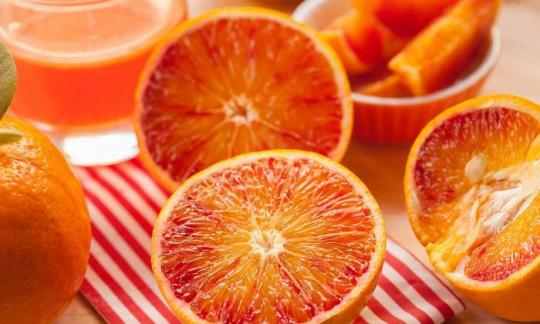

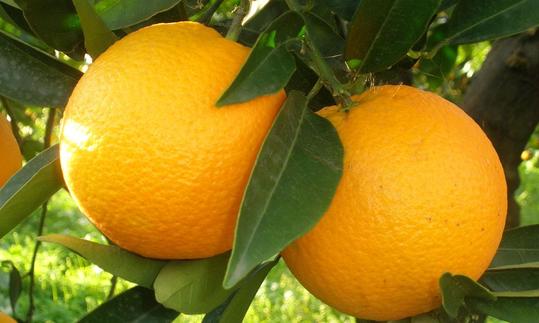

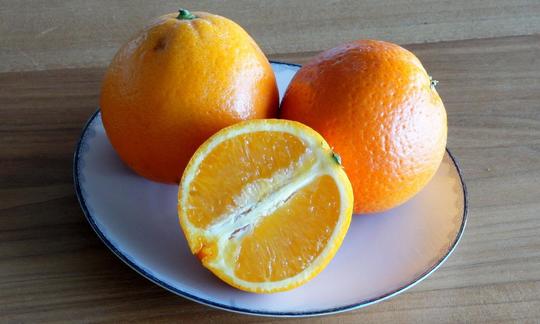

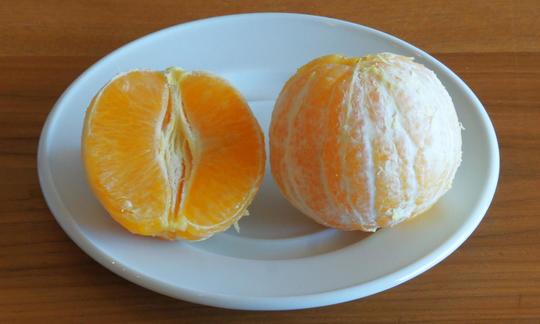

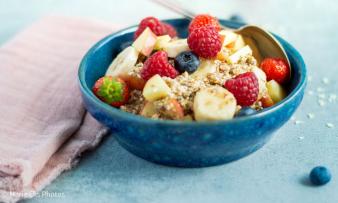
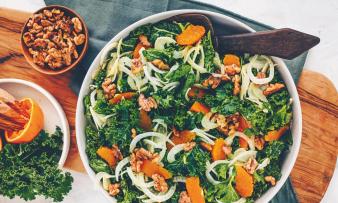
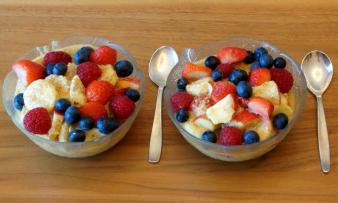





Comments